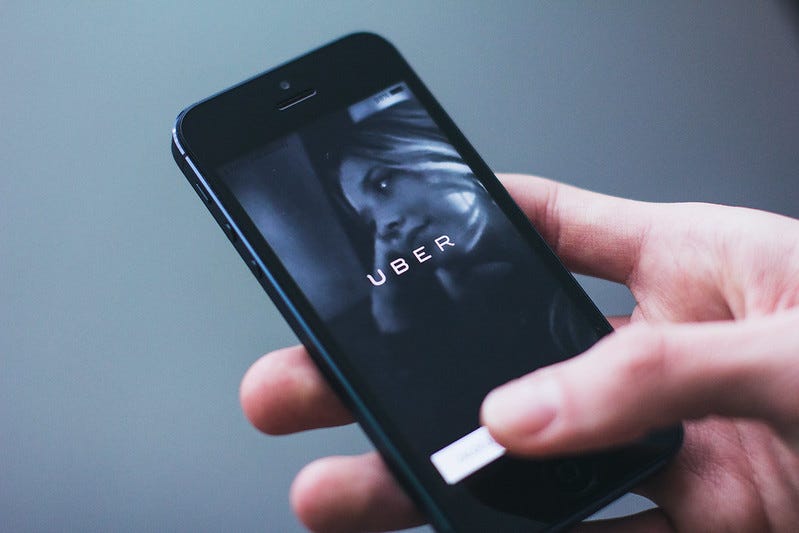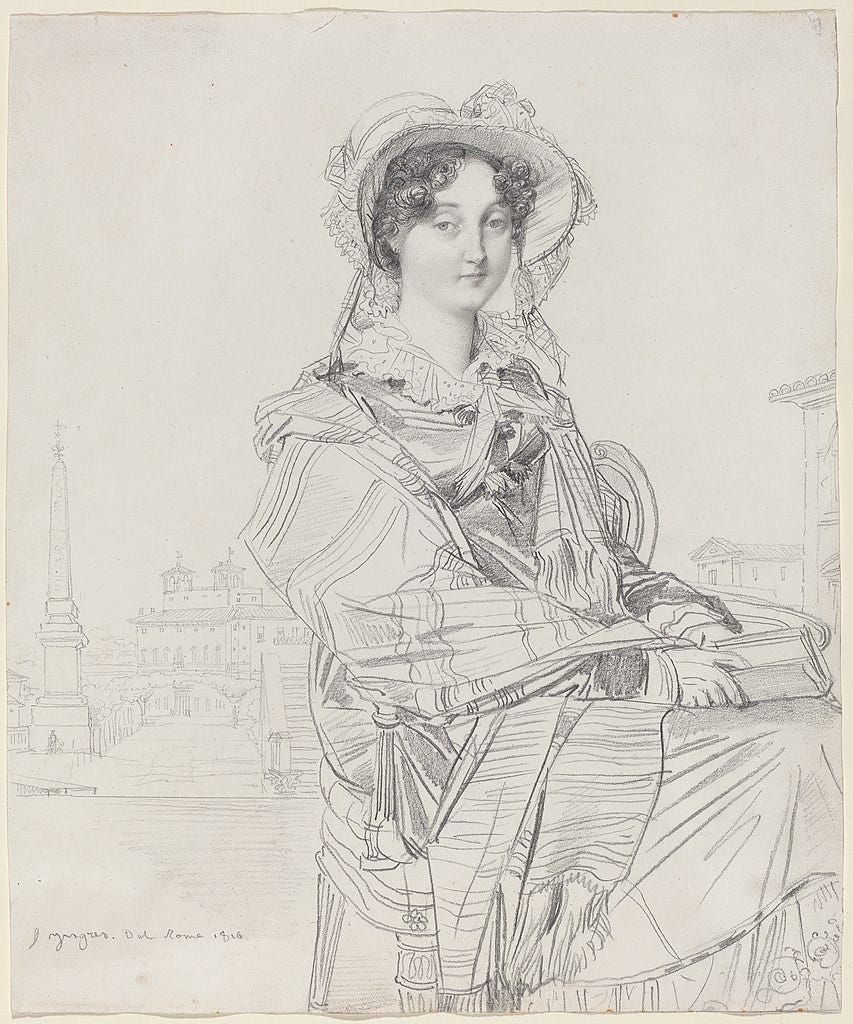26 May 2022. Uber | Updates
Uber tries to stop losing money // More on Hockney, electric vehicles, and Surkov
Welcome to Just Two Things, which I try to publish daily, five days a week. Some links may also appear on my blog from time to time. Links to the main articles are in cross-heads as well as the story. Recent editions are archived and searchable on Wordpress.
This isn’t a full edition of Just Two Things—unfortunately work commitments prevent that until tomorrow. So this slightly lightweight edition includes a piece on Uber, an update, and catches up with some comments from readers.
1. Uber tries to stop losing money
I’ve written recently, in different ways, about the idea that the companies that came of age during the long ICT wave are now morphing into conventional businesses that can no longer rely on subscriber numbers to keep growing or venture capitalists to underwrite market capture. (Netflix here; venture capital here.)
Uber seems finally to have hit the rails as well, and there have been a couple of pieces about this in my feed.
Slate had a piece headlined ‘The era of cheap rides is over’. Ali Griswold’s Oversharing newsletter, meanwhile, was headlined ‘No more free rides’.
The two pieces are in conversation with each other. But they both start from the same place: Uber CEO Dara Khosrowshahi’s memo last week about the company’s ‘unit economics’:
“The average employee at Uber is barely over 30, which means you’ve spent your career in a long and unprecedented bull run,” he wrote. “This next period will be different, and it will require a different approach. … We have to make sure our unit economics work before we go big.”
In her newsletter, Griswold raised her eyebrows at this. (Her piece is paywalled, but Henry Grabar quotes her in his Slate piece:
“Uber has always said it would reach profitability at scale, thanks to network effects, etc., but what is scale if not a company that operates in 72 countries and more than 10,500 cities, which last year had 118 million active users every month and completed 6.3 billion rides/trips/deliveries? Uber is the definition of scale, yet it is still nowhere near consistent and reliable profitability.”
The Slate piece starts with a conversation with a former ride-sharing exec about why the business is a tough one:
Many of those (ride-share) companies are now gone or in retreat, for which he offered a few explanations, such as the cost of maintaining the fleet (a broken window might eat up a couple months of a car’s revenue) and the logistical hassle in cities that liked the idea of new mobility options but didn’t always want to part with the curb space that made them possible. One of the biggest factors in car-sharing’s demise, the executive said, was Uber... For much of the last decade, even for long rides, taking an Uber has also been cheaper.
The exec might have added in the problem of drivers expecting to earn enough to live on, of course. But the reason for Uber being cheaper is that Uber has pumped a huge amount of its investors’ money into subsidising its customers, as part of its strategy to dominate markets. How much money? Well, $30 billion in the five years alone since its financials have been public information. It effectively transferred money from extremely rich VCs to those who are affluent enough to use hire cars in cities.
(Image by freestocks.org/flickr. CC0 1.0 Universal (CC0 1.0) Public Domain Dedication)
So, just at the level of company strategy, we have to think that this is a bet that failed. And Uber prices have been rising steadily since 2018–by more than 90%, according to one analysis:
Think of it as a city-transportation parallel to what economists are calling the end of the “era of free money,” as interest rates finally rise. It’s the end of a decade in which we changed our systems, our habits, even our architecture, around the assumption that we could be driven around for cheap.
But Grabar has a sharp eye to the wider effects of all of this—the second order effects, if you like. They’re not trivial, especially in the US.
Apart from the well-known effects on city congestion, and knock on impacts on air pollution, and the unfair competition with other taxi and hire car businesses, the subsidised Uber (and Lyft) model contributed to killing of car sharing models such as Maven and Car2Go which were potentially more interesting, certainly in terms of reducing long-term ownership levels than a subsidised hire car service.
The adverse effects on public transport have been well-researched:
One study estimates the arrival of Uber and Lyft in a city decreases rail ridership by 1.29 percent and bus ridership by 1.7 percent each year. In San Francisco, where Uber was founded, the authors estimate Uber has decreased bus ridership by 12.7 percent. A second study concluded (that there was) a 5.4 percent decline in bus ridership in midsize cities.
Of course, some of this may reverse as Uber’s prices spiral upwards, but Grabar also points to the more insidious effects of Uber on transport innovation—that its boosterism of more distant technologies such as autonomous vehicles and flying cars effectively discouraged public transport investment.
Some of the second order effects have been more beneficial: the easy availability of hire cars gave developers and city planners permission to reduce the number of parking slots at new developments for example. American drunk driving rates have also fallen.
Grabar asks whether the ‘on demand hire car’ model is a good enough business to survive at scale if it costs twice as much as it used to. He’s doubtful:
The level of money plowed into creating the Uber-Lyft system is reminiscent less of typical corporate expansion than of a big government project like the Concorde. The supersonic jet ultimately wasn’t a good enough product to endure in spite of all the money that had been spent on its development. But at least when the Concorde revealed itself to be fundamentally incompatible with the times, it didn’t employ millions of people and ferry around billions more.
And this speaks to a wider issue, of the perverse incentives created by significant inequalities of wealth, far too much loose capital, and slack corporate oversight. While $30 billion doesn’t buy a lot of transport investment, it does buy a lot of transport innovation. And in any of us had had any say in it, we probably wouldn’t have chosen the Uber or Lyft model, whose only innovation is a completely replicable layer of digital customer service, as being the best thing to trial.
2. Updates and readers’ notes
Hockney’s Eye
I wrote on Monday about the Hockney’s Eye exhibition at the Fitzwilliam Museum in Cambridge on Monday, as an exploration of technologies of seeing.
There’s a more conventional review in The Guardian by its art critic, Laura Cumming. She’s sceptical about Hockey’s theory that Ingres used a camera lucida for his portraits: the evidence isn’t there:
The agility of Ingres’s draughtsmanship amazes, the line so lithe and spare in all its descriptive acuity; and it is the same with the Hockneys. But scepticism about the camera lucida theory – no such aid was found among Ingres’s possessions, nobody mentions seeing him use one – has a pleasing corollary in the images themselves. Ingres is superbly consistent; Hockney is not.
—
(‘Mrs Charles Badham’, 1816, by Ingres. Made available by the National Gallery of Art under CC0 1.0 Universal (CC0 1.0) Public Domain Dedication.)
Updates from readers
Guido Viik wrote from Estonia in response to my piece about electric vehicles (EVs) reaching a tipping point with a note to say that the rise in energy prices has narrowed the cost advantage of EVs over conventional combustion engined vehicles.
Nissan Leaf technical data indicates average consumption 18kwH/100km; the equivalent conventional car would take about 6l/100km. At current London prices, of 28p/kwH and £1,65/l this means £5,04 and £9,9 respectively per 100km. So EV still saves, but less than few years ago.
This could get worse: oil prices will likely fall if the global economy slows, and electricity could remain high. That seems to have happened already in Tallinn:
we have already seen real electricity prices that render EV uneconomical compared to gas.
The full report by EY on electric vehicles can be found here.
On Tuesday I shared a 2014 piece by Peter Pomerantsev about Vladislav Surkov, who had worked behind the scenes for Putin from 1999.
Nick Wray reminded me that Surkov had been fired by Putin in 2020, apparently because of a difference in views over Ukraine.
The Daily Beast had a good summary:
Surkov is blamed for poisoning Russia’s democracy, helping to destroy freedom of the press, inspiring far-right movements, and for shaping failed policies in Ukraine. During the first decade of Putin’s Russia, Surkov tightened the reins of authoritarian rule, leading to Putin’s second decade in power, and now perhaps a third—but this time without Surkov. Even at the height of Surkov’s influence there were constraints. Olga Kryshtanovskaya, a well-known Kremlinologist who used to work with Surkov analyzing polls, tells The Daily Beast, “He built the system from within but his power was limited. He once told me he was not walking in an open field but rather along a corridor with walls on both sides.”
The piece also mentions that in 2019 Surkov was the only Russian on Foreign Policy’s list of ‘100 global thinkers’, which I imagine might have also irritated Putin.
“Vladislav Surkov has perfected the art of propaganda,” the item explained. “Surkov has not only fortified the Kremlin’s power by rearranging Russia’s landscape of opposition parties and civil society groups but has also exploited media fragmentation to increase the reach of Russian disinformation—at home and abroad. His approach is said to have inspired various imitators around the world, including anonymous social media trolls and the Trump administration’s press operation.”
——————————-
j2t#319
If you are enjoying Just Two Things, please do send it on to a friend or colleague.




